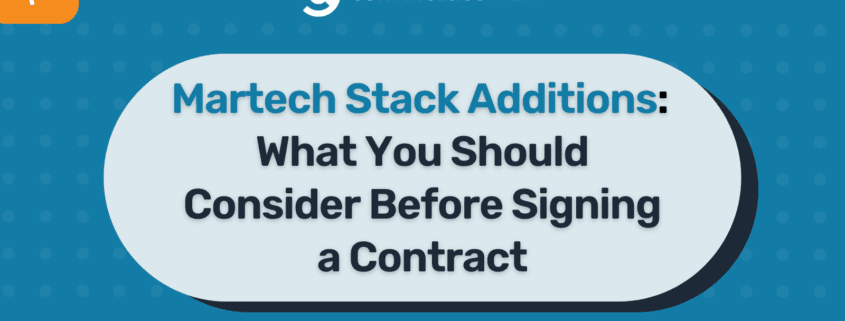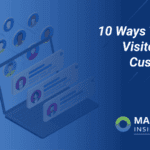Martech Stack Additions: What You Should Consider Before Signing a Contract
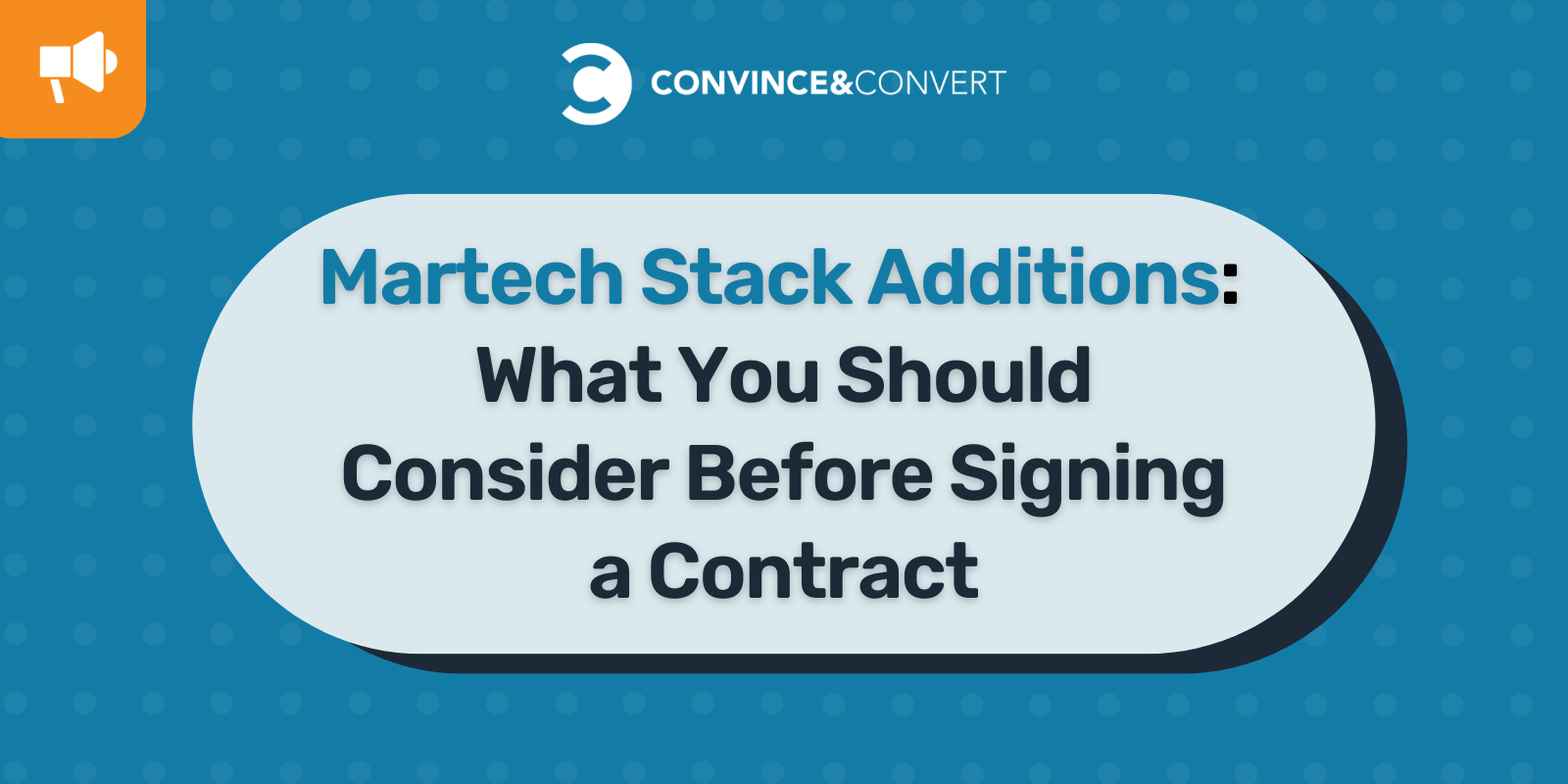
Software, Software Everywhere
Companies are using more software than ever. The latest data from Zylo revealed the average enterprise-level organization has 323 SaaS apps in their stack and spends about $42 million on SaaS every year.
Even smaller organizations with fewer than 500 employees are buying and implementing about four new pieces of software every 30 days.
That’s a lot of software.
And the evaluation process for new martech software can be tedious, time-sucking and downright painful if you’re not organized with your approach.
Searching with Your Browser Closed
When your martech stack software isn’t meeting your team’s needs and you know you need to start looking for a solution, start by closing your browser window.
It’s easy to start your search by looking at different software solution websites and even larger comparison and review websites but this approach will usually cost you more time and cause you to miss out on key requirements and needs.Instead, looking inward at your current situation and how your team is currently operating is always the ideal place to start.
A few questions to ask you and your team:
What’s working well right now?
What processes are running smoothly and have the highest adoption and compliance rates with your team and how is your current software solution supporting these processes?
This could look like developing content strategy and calendar through to execution and promotion is working smoothly.
What isn’t working well right now?
Where are your marketing processes and projects falling down?
This could look like missing information, missed deadlines, and your team needing more and more time in order to finish deliverables.
Where are you experiencing growing pains?
Common growing pains look like employees sharing logins, your team isn’t able to identify who changed what and when because points of accountability are missing, necessary information and work is getting lost, and you and your team say things like, “I wish this software did this…”
If you and your team are duct taping together different pieces of software that don’t integrate well with each other to create a haphazard tech stack, this is also another sign that you’ve outgrown your current solution.
If your team actively avoids using the software, it’s time to start looking for a new solution. For instance, if your team doesn’t use the project management software designed to manage deadlines and milestones and uses a spreadsheet “because it’s easier/faster” this is a red flag that something isn’t right with your current solution.
How do you find the best-fit software solution for your team?
Not so long ago, building a custom software solution to do all the things your team needed to do would be a possibility. But with nearly 10,000 Martech SaaS solutions in 2022, those days are long gone.
It’s cheaper, easier, and so much faster to buy what you need “off the shelf.”
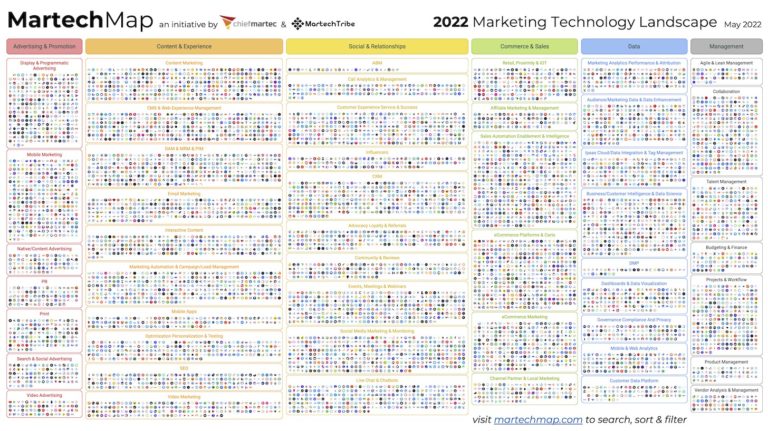
But with all these potential solutions, where do you even start to find the right-fit solution for you and your team?
Helpful considerations for your martech software search
Start with your goals
What is it that you’re trying to accomplish? Be specific and walk through the projects and processes that you and your team have to execute in order to be successful, this will help you develop use cases you can match against software features.
- Are you trying to create a content strategy, and calendar and allow your team to execute against it?
- Are you trying to measure performance across multiple channels?
- Are you looking for a more cost-efficient data asset management solution with better filtering mechanisms?
- Are you looking to implement marketing automation that integrates seamlessly with your customer database?
- Are you trying to smooth out your project management processes and combine multiple pieces of software that won’t integrate?
- Yes, to all of the above?
Work with your team to identify needs
Collaborate with your team to sanity-check all of the things your new software solution has to help you do better. Depending on the roles of your team members, they’ll have different experiences with your current software solution and processes that you may not be aware of.
Also ensure that you include a member of your IT department or team members who would be responsible to help migrate any existing software to a new solution. Their feedback will be critical for establishing timelines and broader expectations.
What software are you currently using?
List out the current software solutions you use and what they help your team accomplish? As a bonus, take a look at the software vendor’s websites and look at the integrations they currently offer.
Note: Some software vendors offer native or seamless integration with other software and some require a third-party connector like Zapier – it’s important to know the difference as you look for a new solution.
What’s your budget?
Cost is always a factor when looking at software, though it may be secondary to the functionality and integrations different software vendors offer. Identify what you’re currently paying for your Martech software stack and identify if budget is a constraining factor for your search.
If you’re looking for a longer-term software solution, get a good estimate on the number of anticipated seats you might need over the next couple of years – many software vendors base their pricing on the number of needed seats and you will want to factor future use into your budget.
Implementation timeline and cost
Some software requires technical implementation or migration of existing assets. It’s important to ask the questions, and get example timelines and a quote for implementation costs during your initial evaluation. Odds are good that you’ll have to talk to a salesperson or take a demo to get this information.
Despite what their messaging may claim, every new piece of software has implementation time and costs associated with it. Even if it’s as easy as creating a login or hooking up a migration tool, you should still anticipate time and any related costs in productivity as you migrate your team from one solution to the other.
Training and building habitual usage with your team
During your evaluation, you’ll want to get a sense of how long it’s going to take for your team to get up to speed with your new software. Ask questions like, “what self-serve training resources are available? What remote/in-person training services are available, and what is the cost for these resources? What’s the anticipated time for basic usage? What is the anticipated time to admin-level usage? What does the onboarding effort look like for our new employees?”
Integration with other solutions
Integration with other apps is crucial given the size of organizational tech stacks. Ask about native integration vs. requiring a connector like Zapier (which has additional costs and time associated with it). Also, investigate whether the software offers an open API that will allow other partners to create integrations.
According to Martech.org, when marketers replace software, integrations are the #1 factor for seeking new solutions.
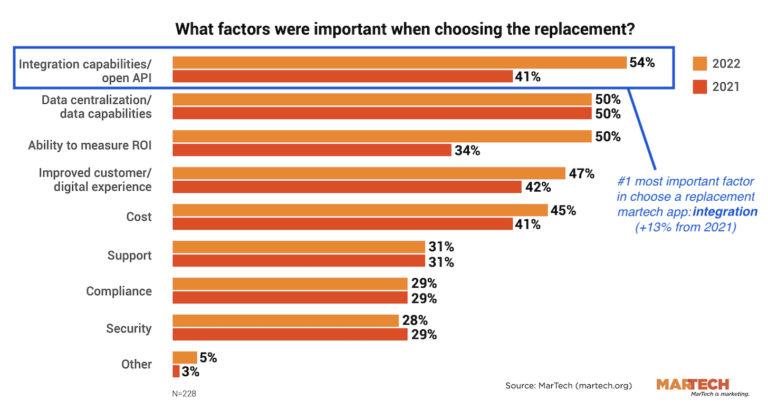
Investigate the depth of the integration – some are deep and some are more surface and shallow. So if you’re looking for your CRM to deliver every piece of information into a project management tool, you’ll want to be specific with the requirements you need to support.
Carefully evaluate hype and bold claims
Every software solution issues bold claims about productivity increases and ease of use, but your results may vary – because every business is unique in their needs.
Ask for case studies and interview existing customers – ask them about their experience with implementation and usage and ask all of your questions.
The Gartner Hype Cycle might be able to help you separate the hype from viable and appropriate options for you and your team. It’s natural for people to overestimate their ability to invest in a new software solution or get over excited about a software solution you know your closest competition uses. The Hype Cycle looks at phases such as Innovation Triggers, Peak of Inflated Expectations, the Trough of Disillusionment, the Slope of Enlightenment, and Plateau of Productivity.
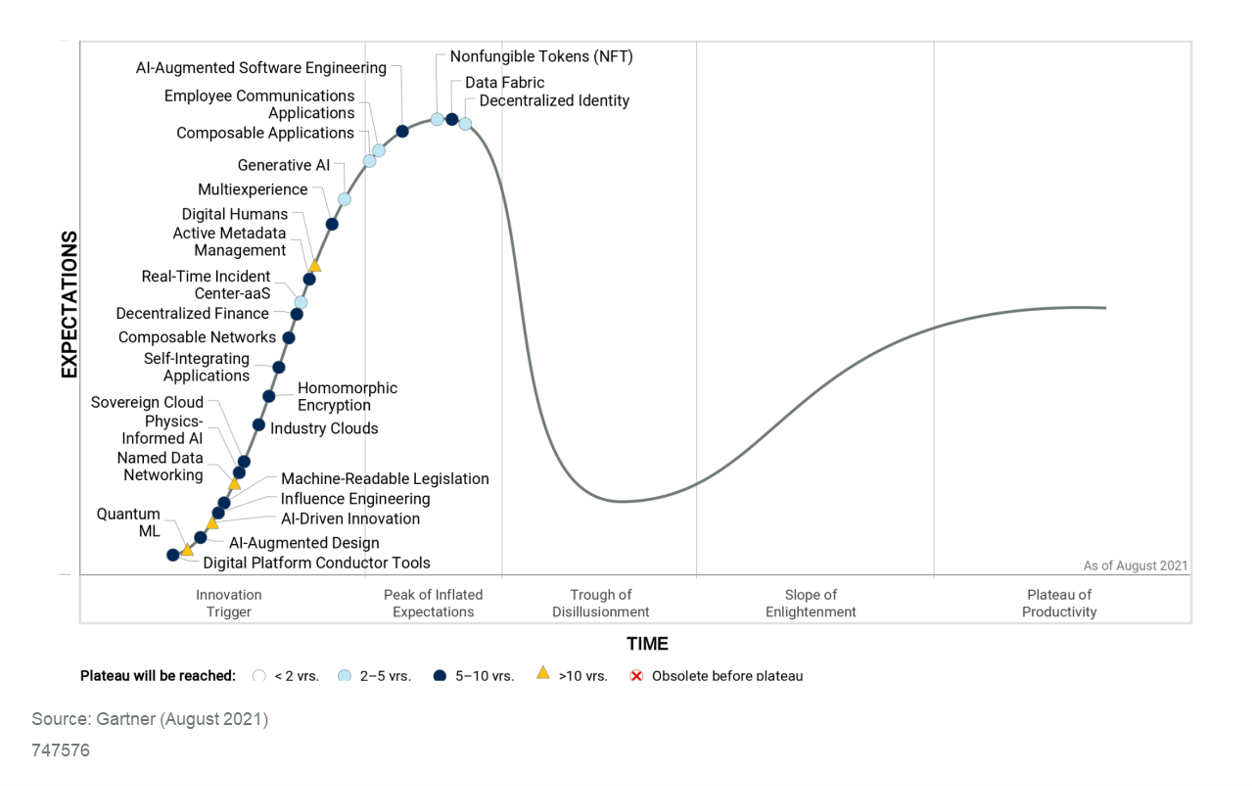
Security & Support
Even if you don’t work in a highly competitive industry ripe with corporate espionage, security and support are two factors that shouldn’t be overlooked.
Ask about the security precautions, user permissions, admin functionality and data security factors during your sales calls and demonstrations.
Don’t forget to include questions about the available or promised uptime and ask to see an example of the Service-Level Agreement (SLA). Factors such as available support hours, average response times, and even third-party support outsourcing are important to understand before you make a commitment.
You’re Ready to Weigh Your MarTech Stack Options
It’s easier than ever to buy and implement software, and there’s so much to choose from it’s easy to get caught up in the excitement and promise of solving your team’s stickiest problems.
Take your time; make sure you understand specifically what problems you need your new software to solve and what new features are must-haves to support your team. And don’t forget to look at your existing martech software stack before embarking on a journey that might be more expensive and time-consuming than you originally anticipated.
The post Martech Stack Additions: What You Should Consider Before Signing a Contract appeared first on Convince & Convert.
Did you miss our previous article…
https://www.sydneysocialmediaservices.com/?p=1713

